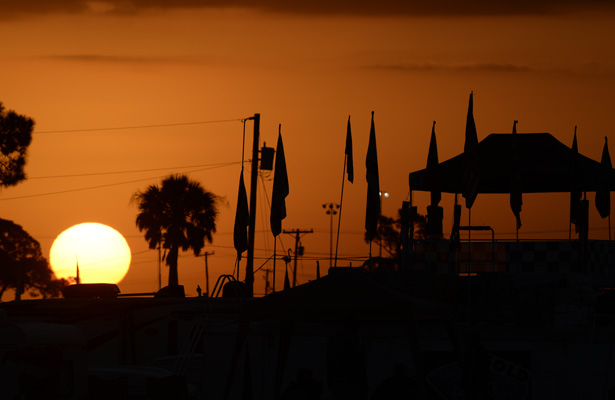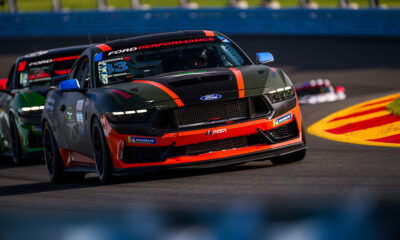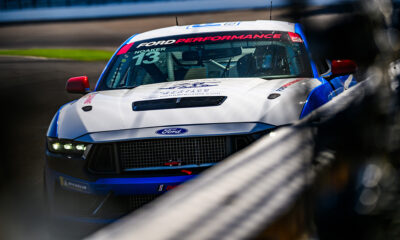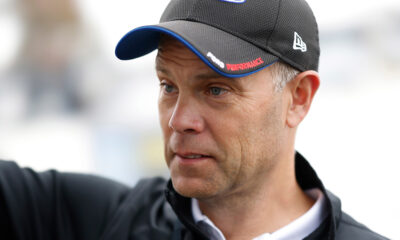
Photo: IMSA
Two races into the post-merger world of North American sports car racing, and there’s certainly been positives and negatives to take away from the early days of the TUDOR United SportsCar Championship.
Last weekend’s Mobil 1 Twelve Hours of Sebring, a race that saw three massive accidents, a blazing inferno, two incorrect officiating calls and a controversial late-race caution, was certainly not one of IMSA’s brightest days, particularly on the heels of a challenging series-opener at Daytona.
Yet, through increased ticket sales, a near-capacity grid and improved Balance of Performance, it’s not been all doom-and-gloom for the unified series as it undoubtedly goes through some growing pains, and while under the public scrutiny of teams, manufacturers and fans alike.
While there’s a laundry list of points to be analyzed and discussed, here are some of the trending topics that I feel needs to be either applauded or addressed:
Officiating — This has been the talking point twice in two races, following the reversal of the late-race penalty to Level 5 Motorsports at Daytona, and now two further officiating errors that went uncorrected and could have resulted in different winners in both GTLM and GTD.
While making a late-race call for deemed avoidable contact is one thing, misidentifying the wrong car based on a mixup with on-board footage is a whole different matter. What’s more, not letting the team owner plead his case, or evaluate the footage himself, before being threatening to stop scoring his car unless he serves the penalty, casts even further questions into the behavior in race control.
To IMSA’s credit, an apology was issued for the error, but that only goes so far as it could have had a significant impact on the results in two classes. Implementing a more diplomatic process, such as used in the FIA WEC where team managers are summoned to the race director prior to being issued a penalty, could strengthen relations between officials and teams and also help eliminate mistakes as in the case of a misidentification.
Balance of Performance — While there was much talk about the P2/DP BoP entering Sebring, many of those concerns were put to rest when the green flag flew, as the race up front featured an entertaining and closely-fought battle with the two types of prototypes. Despite not winning the race, three P2s finished in the top-five, marking a considerable improvement from Daytona, which was dominated by DPs.
IMSA’s technical team, led by Scot Elkins, should be applauded for getting the much-talked-about balance correct. It will no doubt still be a talking point throughout the season, as the two platforms will react differently to other circuits, but Sebring proved to be a good start. As for the other classes, no one car stood out from each other, meaning it too is on a solid foundation.
Safety/Driving Standards — In the wake of Memo Gidley and Matteo Malucelli’s accident at Daytona, there were no fewer than three other massive shunts last weekend, two of which caused by questionable driving standards. While the Daytona crash came at no fault to either driver, it served as a wake-up call for driver safety in general, and we were lucky that all drivers escaped serious injury at Sebring.
There have been more than 150 different driver pairings in the first two races alone, some of which featuring drivers new to the sport. The influx of inexperienced gentlemen drivers in the series, due to increased costs, needs to be reviewed, as well as the efficiency of the new track-based safety teams.
It took more than one minute for anyone to get to Ben Keating’s flaming SRT Viper GT3-R and more than 15 minutes to extinguish the blaze, and similar delays when Kyle Marcelli’s Starworks Motorsport Oreca FLM09 nearly burned to the ground at Daytona. Thankfully both drivers were able to climb from their cars without assistance. But what if they weren’t able to?
Car Counts/Attendance — The merger has seen a massive spike in car counts, with near-capacity grids at Daytona and Sebring and likely to continue throughout the season. It was enough to split off PC and GTD into a standalone race at Mazda Raceway Laguna Seca, along with many events not featuring all four classes. Despite some people’s opinions, it’s a good problem to have.
Fan attendance has also been on the rise. Daytona saw a noticeable boost over previous years (ISC does not release attendance figures) and advance ticket sales for Sebring were also up. However, the real test will come later this year to see if the momentum will keep building at some of the regular-season events this summer.
Full-Course Cautions — Sebring saw a race record-tying 11 full-course cautions, with more than five hours of time spent behind the safety car. While the majority of the yellows were justifiable, due to the accident-filled nature of the race, some ended up being more than 40 minutes in length, including a controversial yellow in the final hour for a car stopped on track that lasted half an hour.
IMSA’s Scot Elkins said they will be reviewing the full-course caution procedures prior to the next round at Long Beach, specifically ways to speed up the wave-by process, which consumes the majority of the time. Yet, there are still questions surrounding the reason to call a late-race yellow for the second consecutive event. Is it in the interest of the sport or just for entertainment?
Driver Ratings — A hot topic among drivers and teams, IMSA’s evolving nature of the driver ratings system has resulted in headaches for competitors currently in the TUDOR Championship and those looking to enter. With PC and GTD being restricted to only one Gold or Platinum “professional” driver, a number of teams have capitalized on the system by hiring overqualified Silver-rated drivers to fill the “amateur” requirement of their lineups.
The list, based off the FIA and ACO’s driver categorization system used in the FIA WEC, with additions and changes made by IMSA, has now seen a number of professionals fall under Silver status. It has effectively ruined the spirit of the driver enforcement process in the first place, which was meant for paying gentlemen drivers.
With some pros listed as Gold and some as Silvers, and ratings being revised throughout the year by IMSA, the system is clearly not working and a complete re-think has to be made, not only in the TUDOR Championship but also on the other side of the pond.
Media Coverage — IMSA’s new five-year contract with FOX Sports came as a boost, and while Sebring lacked significant TV coverage, the majority of the races will be broadcast live on FOX Sports 1. However, there are some noticeable absences, including the PC-only race at Kansas Speedway that will not have any at-track TV production, as well as the entire Petit Le Mans being broadcast on FOX Sports 2, which still has limited availability.
The series will have a tough time if there are not enough eyeballs tuning into the broadcasts, which are now largely financially supported by the manufacturers. While it’s a delicate balance between costs and reward, mainstream media coverage is one of the major factors in what’s going to make or break the new championship.
























